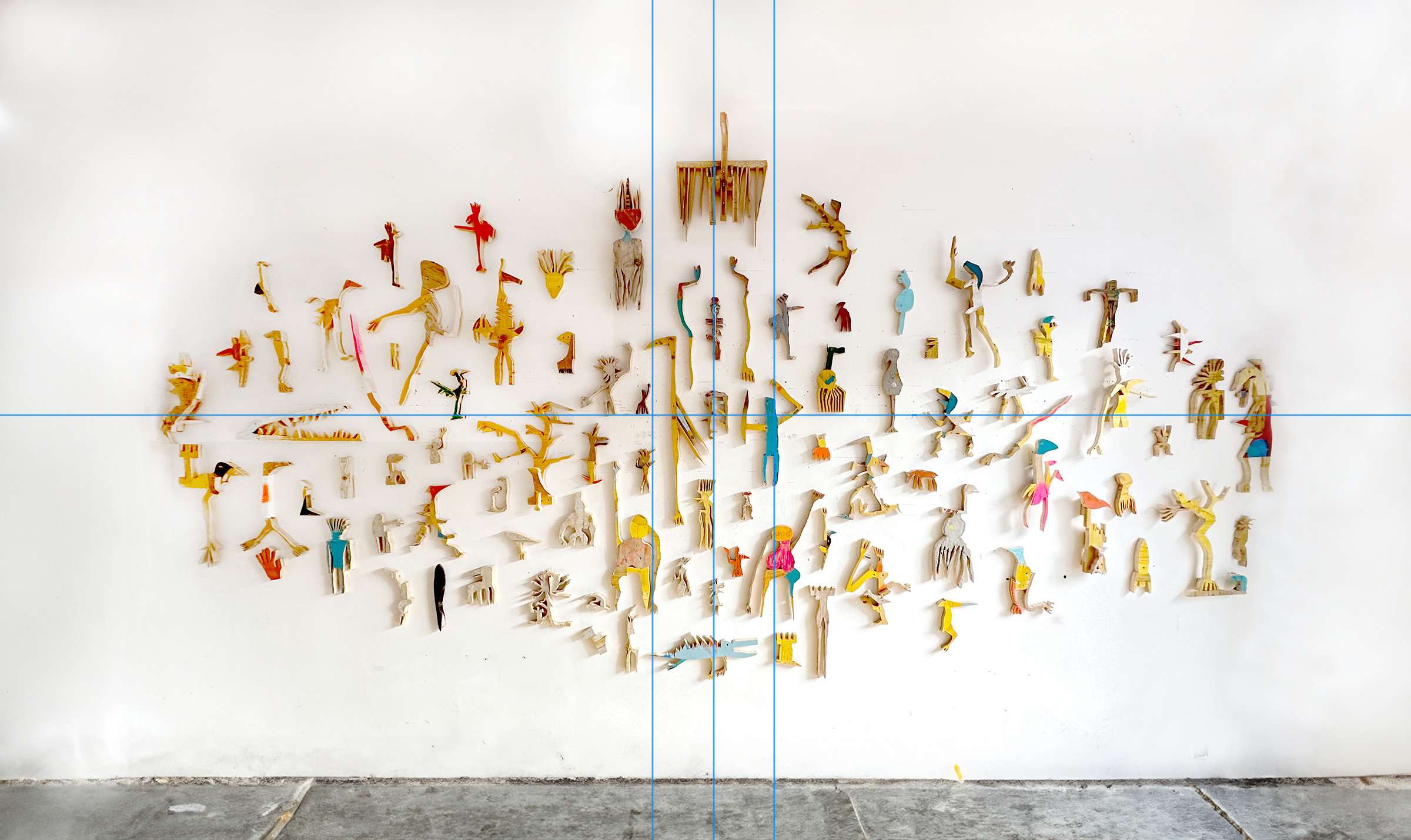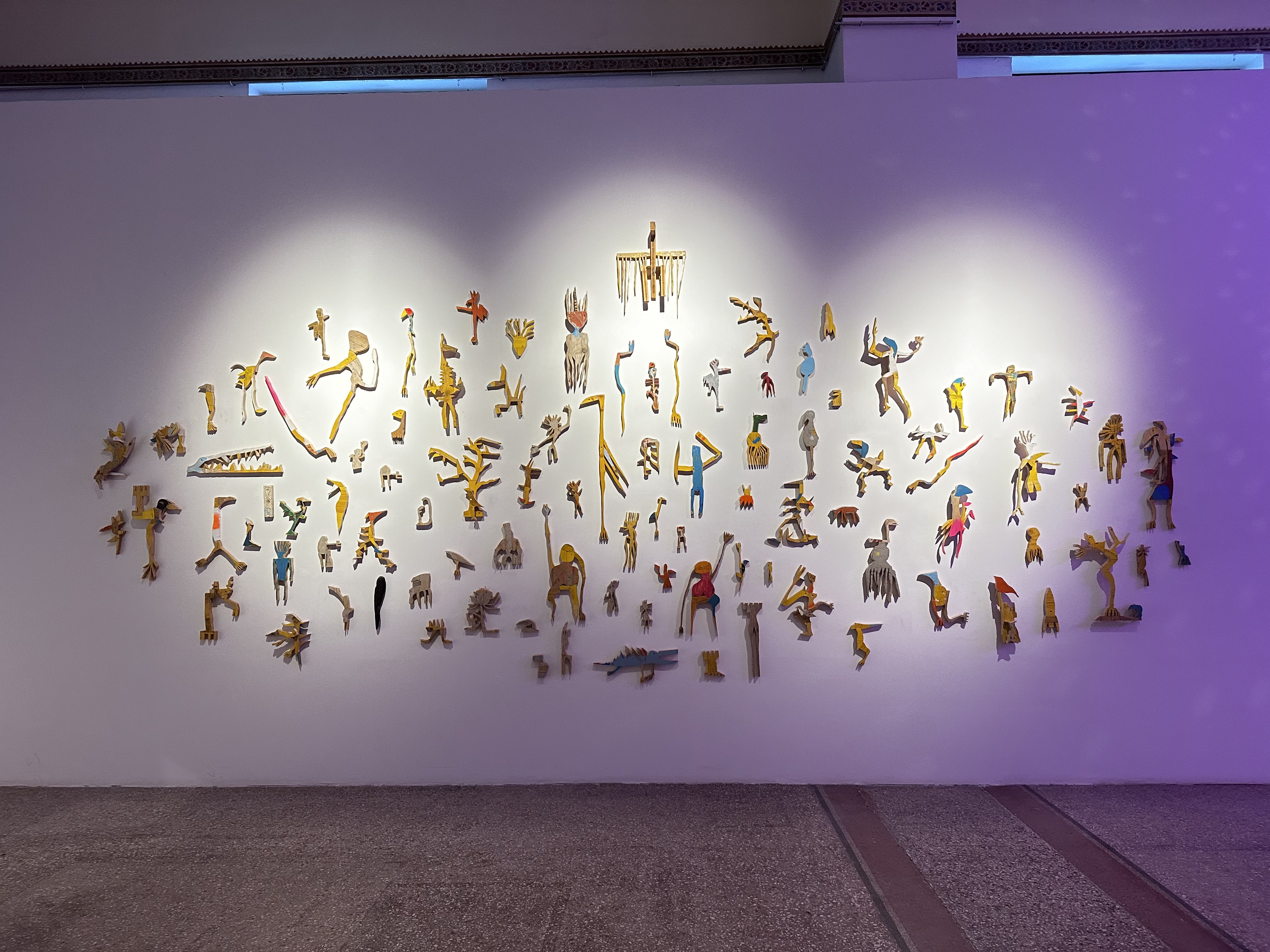
10000 BC , but not from this planet
In Ernst Koslitsch’s installation, "10000 BC, but not from this planet," the boundaries between archaeology, myth, and contemporary imagination dissolve in mesmerizing tension.
Displayed within the hallowed halls of the Nationalmuseum von Bosnien und Herzegowina, under the keen curatorial eyes of Margarete Makovec and Anton Lederer from Rotor Graz, Koslitsch’s wall-bound collection of wooden sculptures feels simultaneously ancient and disturbingly extraterrestrial.
Each piece, meticulously carved from reclaimed wood, appears as fragmented remnants of an unknown civilization—a visual riddle left behind by inhabitants who once traversed Earth, yet belonged elsewhere. Koslitsch’s forms evoke archaic cave art, primitive idols, and cryptic glyphs, while their bright color accents rupture our familiar assumptions of historical artifacts, signaling they might be testimonies of an alternative past or a speculative future.

What sets Koslitsch apart in contemporary art is his confident ambiguity: each figure suspended against stark museum walls beckons viewers into an enigmatic narrative. They hang like fragile echoes—an almost playful mockery of scientific certainty, teasing out questions about humanity’s obsession with categorizing the inexplicable. Koslitsch doesn’t merely craft objects; he creates portals into speculative archaeology, hinting that beneath the known layers of our reality lies something beautifully unfathomable.
"10000 BC, but not from this planet" exemplifies Koslitsch's mastery at blending humor, history, and existential wonder. The installation dialogues poetically with its institutional context, subtly confronting the authoritative voice of the museum by presenting artifacts utterly resistant to classification. These sculptures disrupt the linear narratives championed by traditional exhibition spaces, compelling audiences to rethink history, anthropology, and their relationship with what is considered "real."
"He uses humor like an archaeological tool, gently excavating our assumptions about the past and future."
There is a striking theatricality to Koslitsch’s installation. Illuminated carefully, each figure casts shadows that dance upon the walls—shadows that seem more alive, more fluid, than their tangible counterparts. This interplay of shadow and substance draws viewers deeper into Koslitsch's speculative reality, offering a profound meditation on perception itself.


In choosing reclaimed materials, Koslitsch connects his alien objects firmly to our own planet, underscoring a poignant environmental commentary. These strange sculptures, though evocative of an alien genesis, remind us of Earth’s fragility and the impermanence of civilizations. They whisper quietly yet powerfully of ecological vulnerability, each wooden fragment carrying both the weight of past destruction and the potential for renewal.
Ultimately, Koslitsch’s "10000 BC, but not from this planet" challenges the very fabric of historical narrative, museum authority, and ecological consciousness. It is a bold artistic statement that refuses simple categorization, a visionary installation that resonates with an eerie familiarity while simultaneously asserting its otherworldly origin.
Ernst Koslitsch has, in his distinctively humorous and provocative manner, reshaped how contemporary art dialogues with history, leaving viewers in a state of delightful, intellectual disorientation—a place from which to reimagine not just history, but the future itself.